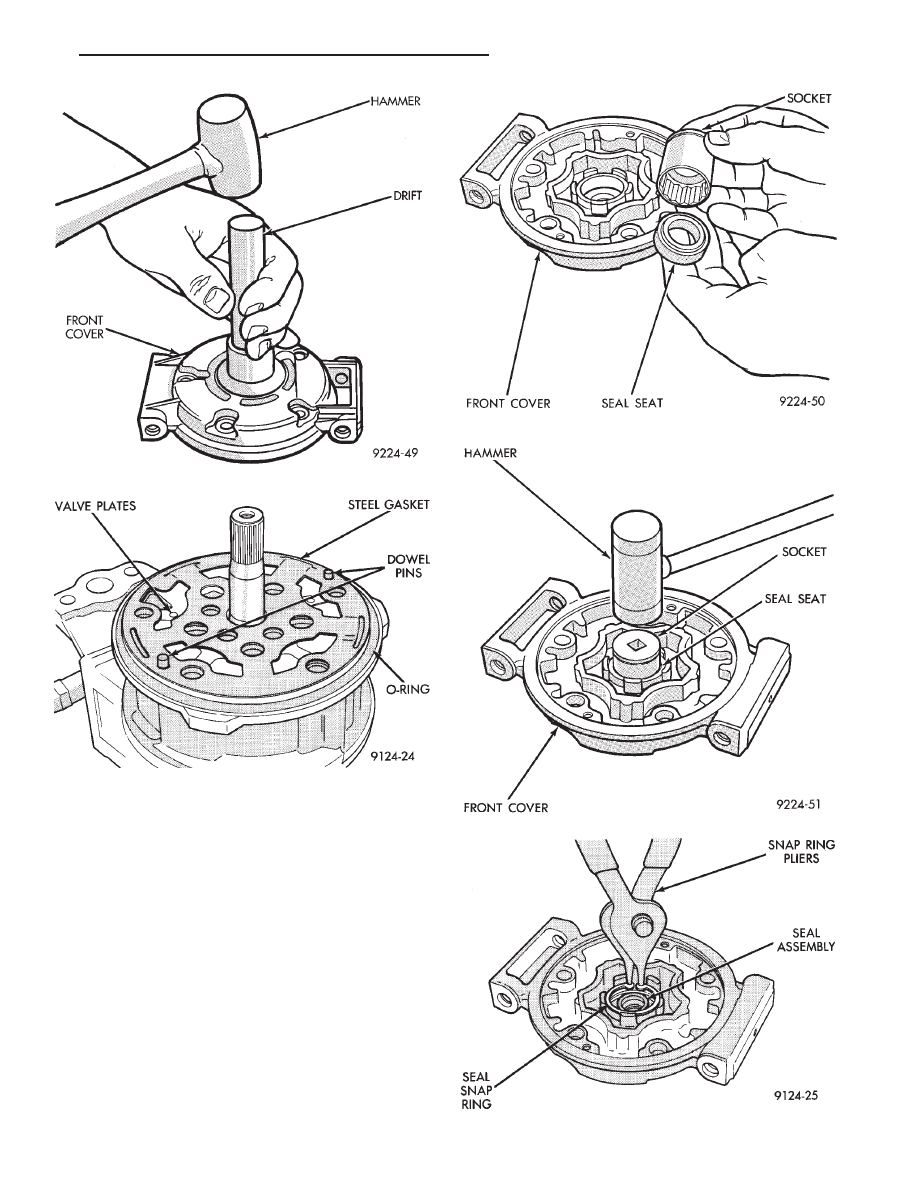Chrysler Le Baron, Dodge Dynasty, Plymouth Acclaim. Manual - part 192

(5) Lubricate crankshaft seal seat cavity of front
housing with refrigeration oil.
(6) Lubricate crankshaft lip seal and seal O-ring
with refrigeration oil. Then install lip seal in front
cover using a socket that contacts the outer diameter
of the lip seal (Figs. 9 and 10).
(7) Install seal snap ring (Fig. 11).
(8) Lubricate front cover O-ring with refrigeration
oil and carefully place it in seal groove.
(9) Install lip seal protector on shaft (Fig. 12).
(10) Install front cover to front compressor body.
(11) Install compressor through-bolts and finger
tighten only. After bolts have been finger tightened,
torque to 29 N
Im (260 in. lbs.).
(12) Install felt shaft seal and retainer (Fig. 13)
into front housing.
Fig. 9 Match Socket to Outer Seal Diameter
Fig. 10 Installing Seal
Fig. 11 Seal Snap Ring
Fig. 7 Removing Seal
Fig. 8 Disassembling Compressor Front End
Ä
HEATING AND AIR CONDITIONING
24 - 29